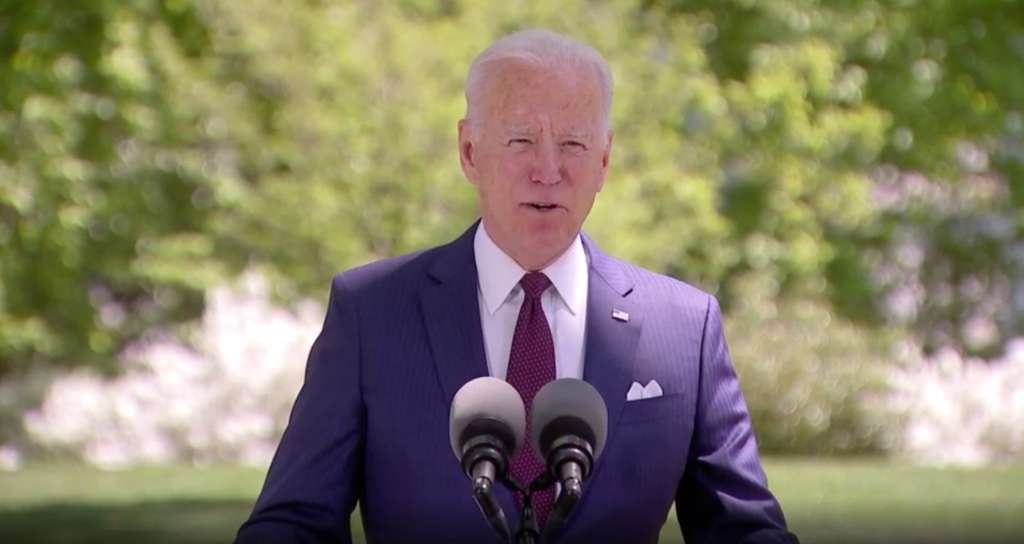PLAINS, Ga. (AP) — In the closing days of his presidential campaign, Joe Biden swung through the Georgia town where Franklin Delano Roosevelt coped with polio, making the case that government can be a force for good. Now, 100 days after taking office, Biden is returning to the state trying to sell voters on his ambitious vision.
The president hopes to rally supporters behind his $4 trillion plans to rebuild America’s aging infrastructure and vastly expand the government’s social safety net. As the nation takes steps to move past the devastating pandemic, he argues that now is the time for the government to spend more on its citizens and raise taxes on the extremely wealthy to cover the cost.
Thursday’s trip is part of an effort to gain momentum for the massive — and expensive — agenda Biden articulated during his first address to a joint session of Congress. It’s a dramatic shift from nearly four decades of politics in which leaders from both parties have spoken of a need to contain government
“In another era when our democracy was tested, Franklin Roosevelt reminded us—In America we do our part,” Biden told lawmakers Wednesday night. “That’s all I’m asking. That we all do our part.”
There’s special significance in Biden’s decision to make Georgia his first stop after the address. He was the first Democratic presidential contender to carry the state since Bill Clinton in 1992.
Biden won by fewer than 12,000 votes out of more than 5 million cast. The state, long a Republican stronghold, is now a political battleground that will feature closely watched races for Senate and governor next year. It will almost certainly be one of the most competitive states during the 2024 presidential campaign.
Before an evening car rally in Duluth, Biden and his wife, Jill Biden, first visit former President Jimmy Carter and his wife, Rosalynn Carter, at their home in Plains, Georgia.
Carter’s defeat to Republican Ronald Reagan in 1980 ushered in an era in which calls for smaller government and lower taxes for big business and the wealthy were embraced as a tonic for economic growth.
Biden, who established himself as moderate during his decades in elected office but has moved to a more progressive approach to governing in the early days of his presidency, offered a rebuttal Wednesday that Reagan’s “trickle-down economics has never worked.”
“It’s time to grow the economy from the bottom up and middle out,” Biden declared at the Capitol.
It’s no accident Biden chose Gwinnett County to serve as the backdrop to begin making his case for his spending plan.
A fast-growing suburban Atlanta county northeast of downtown, Gwinnett is a deep well of Democratic support in the state. Biden received 414,350 votes there in November, 16.8% of his statewide total and about 34,000 more than in neighboring Fulton, home to most of Atlanta. Gwinnett accounts for about 9% of Georgia’s population of 10.7 million.
As a comparison, when President Barack Obama lost Georgia by 5.2 percentage points in 2008, he garnered just 129,025 votes in Gwinnett, about 7% of his statewide total.
Gwinnett stands out for its racial and ethnic diversity, with fast-growing Asian American and Hispanic populations and a thriving business community of immigrants and first-generation citizens. The county anchors Georgia’s 7th Congressional District, which freshman Rep. Carolyn Bourdeaux flipped in 2020 to give Democrats control of both suburban House districts along metro Atlanta’s northern ring.
Biden is also scheduled to travel to Pennsylvania and Virginia in the days ahead to promote his spending plan.
The push for $4 trillion in federal spending is a considerable gamble. Biden is governing with the most slender of majorities in Congress, and even some in his own party have blanched at the price tag of his proposals.
Biden has repeatedly pressed his contention that his plans would put Americans back to work, restoring the millions of jobs lost to the virus. In his speech to Congress, he laid out an extensive proposal for universal preschool, two years of free community college, $225 billion for child care and monthly payments of at least $250 to parents. His ideas target frailties that were uncovered by the pandemic, and he argues that economic growth will best come from taxing the rich to help the middle class and the poor.
In his first three months in office, Biden has signed a $1.9 trillion COVID-19 relief bill — passed without a single GOP vote — and has shepherded direct payments of $1,400 per person to more than 160 million households. Hundreds of billions of dollars in aid will soon arrive for state and local governments, enough money that overall U.S. growth this year could eclipse 6% — a level not seen since 1984. Administration officials are betting that it will be enough to bring back all 8.4 million jobs lost to the pandemic by next year.
A significant amount proposed just Wednesday would ensure that eligible families receive at least $250 monthly per child through 2025, extending the enhanced tax credit that was part of Biden’s COVID-19 aid. There would be more than $400 billion for subsidized child care and free preschool for all 3- and 4-year-olds.
An additional combined $425 billion would go to permanently reduce health insurance premiums for people who receive coverage through the Affordable Care Act, as well as a national paid family and medical leave program. Further spending would be directed toward Pell Grants, historically Black and tribal institutions and to allow people to attend community college tuition-free for two years.
Funding all of this would be a series of tax increases on the wealthy that would raise about $1.5 trillion over a decade.
(Copyright (c) 2024 The Associated Press. All Rights Reserved. This material may not be published, broadcast, rewritten, or redistributed.)

